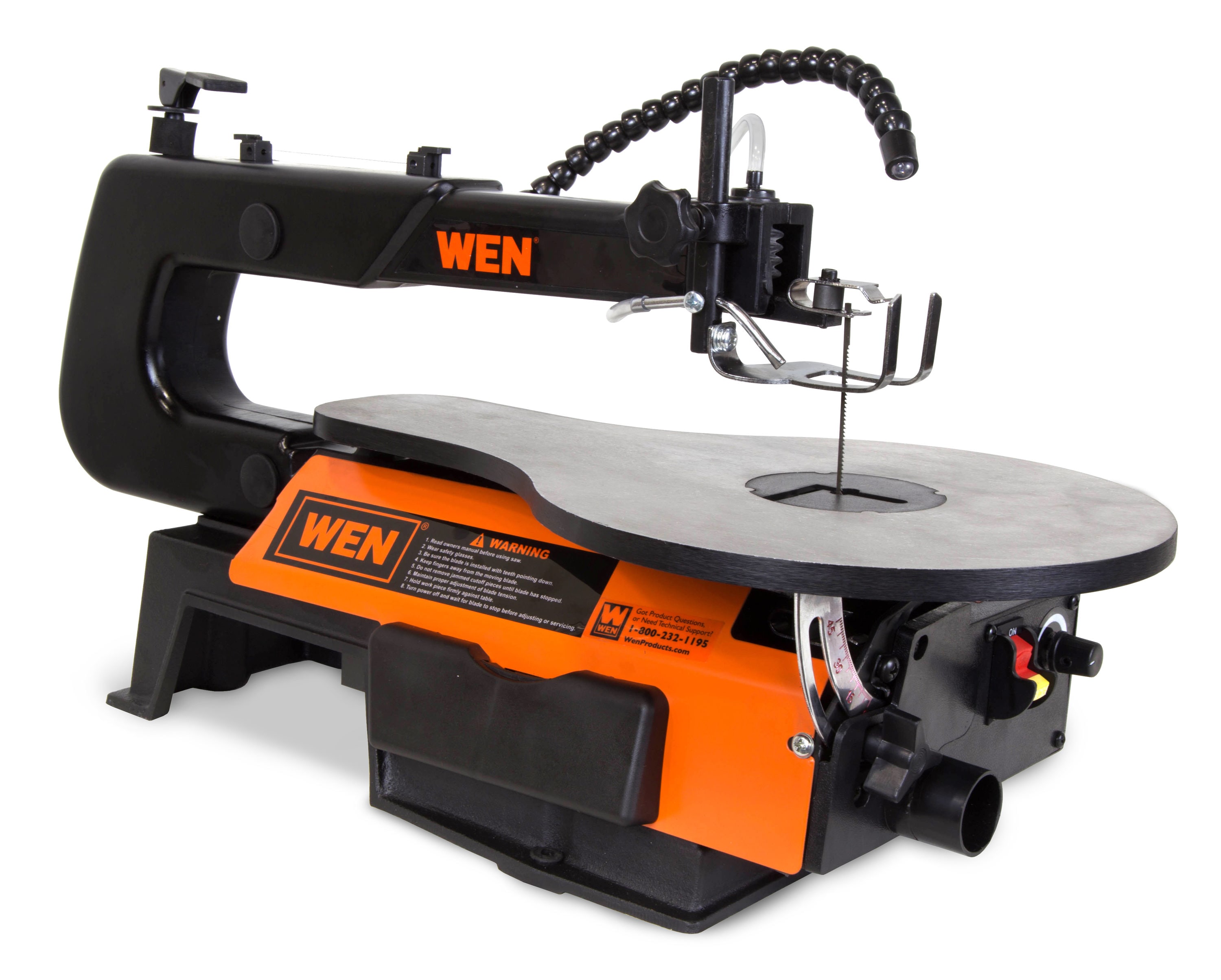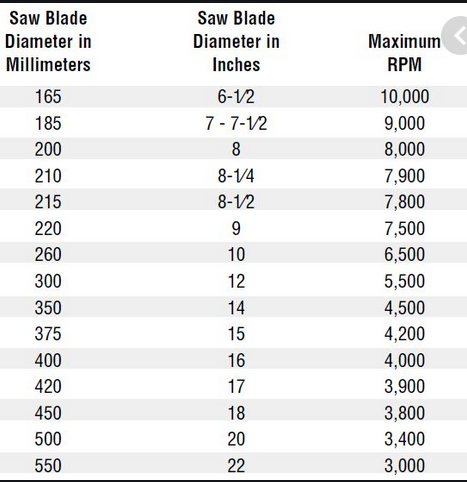If you’ve ever wondered what speed to use on a scroll saw, you’ve come to the right place! Using the right speed can make a world of difference in your scroll sawing experience. So, let’s dive in and explore the fascinating world of scroll saw speeds!
When it comes to scroll sawing, finding the optimal speed is like finding the perfect rhythm for a dance. It’s all about striking the right balance between control and efficiency. So, how do you determine the best speed for your scroll saw? Don’t worry, we’ve got you covered!
In this article, we’ll walk you through everything you need to know about choosing the right speed on a scroll saw. From the factors to consider when setting the speed to helpful tips to enhance your cutting experience, we’ll leave no stone unturned. So, let’s get started on this exciting scroll saw adventure!
1. Assess your material: Consider the type and thickness of the material you’re working with.
2. Start slow: Begin with a low to medium speed setting and gradually increase as needed.
3. Test cuts: Make test cuts on scrap wood to find the speed that produces the desired results.
4. Experiment: Adjust the speed based on the intricacy of the design and your comfort level.
Remember, practice makes perfect! Happy scrolling!

What Speed to Use on a Scroll Saw: The Ultimate Guide
Scroll saws are versatile and powerful tools, used by woodworkers and hobbyists alike. They allow for intricate and detailed cuts on various materials. However, one crucial factor that can greatly affect the outcome of your projects is the speed at which you operate the scroll saw. This article will delve into the importance of speed selection, the various factors to consider, and provide tips for finding the optimal speed for different materials and cuts.
Factors to Consider when Choosing Scroll Saw Speed
When it comes to scroll saws, one size doesn’t fit all. The speed at which you should operate your scroll saw depends on several factors:
1. Material Density and Thickness
The material you are working with plays a significant role in determining the right speed for your scroll saw. Materials like softwoods require slower speeds to prevent splintering and burning. Hardwoods, on the other hand, can benefit from higher speeds to achieve smoother cuts. Additionally, thicker materials may require slower speeds to maintain control and accuracy.
It is crucial to refer to the manufacturer’s recommendations or conduct tests on scrap pieces to determine the ideal speed for a specific material.
2. Blade Type and Tension
The type of blade you use can also impact the recommended speed. Different blades have different tooth configurations and designs for specific purposes. For example, skip-tooth blades are ideal for faster cutting speeds, while reverse-tooth blades are better suited for slower speeds to reduce tear-out. Additionally, the tension of the blade affects how it tracks and cuts, so it is important to adjust the tension properly.
Experimenting with different blade types and tensions and observing the results can help you determine the ideal speed for your scroll saw.
3. Cutting Technique and Pattern Complexity
The intricacy and complexity of the design or pattern you are cutting can also influence the speed selection. For intricate designs with many curves and tight corners, a slower speed allows for greater precision and control. Conversely, larger and simpler patterns may benefit from higher speeds for quicker and smoother cuts.
Understanding the intricacies of your project and adjusting the speed accordingly can enhance your cutting experience and the overall quality of the finished piece.
4. Personal Comfort and Experience
Lastly, your personal comfort and experience level play a significant role in determining the appropriate speed to use on a scroll saw. Beginners may prefer slower speeds to gain better control and build confidence. As your skills improve and you become more comfortable with the scroll saw, you can gradually increase the speed to achieve faster cuts.
Ultimately, finding the right speed for your scroll saw is a matter of experience, experimentation, and understanding the unique requirements of each project.
Optimal Speeds for Different Materials and Cuts
1. Softwoods
Softwoods like pine, cedar, and spruce are commonly used in woodworking projects. These materials are relatively easy to cut and can tolerate higher speed settings. A speed range of 800-1200 strokes per minute (spm) is typically suitable for softwoods, but it is advised to start at the lower end of the range and increase gradually as you gain confidence.
2. Hardwoods
Hardwoods, such as oak, maple, and walnut, are denser and require slower speeds to prevent burning, chipping, or tearing. In general, a speed range of 600-900 spm is recommended for hardwoods. However, it is essential to consider the thickness of the material and adjust the speed accordingly.
3. Plywood and Veneer
Plywood and veneer are composed of thin layers of wood glued together, making them prone to chipping and splintering. To avoid these issues, it is best to use slower speeds in the range of 500-800 spm.
4. Plastics and Acrylics
When cutting plastics and acrylics, lower speeds are preferred to prevent melting or cracking. Set the scroll saw to a speed range of 300-600 spm to achieve clean and precise cuts.
5. Metals
Scroll saws are not typically designed for cutting metals. However, with the right blade, slow speeds below 500 spm can be used to cut thin sheet metal or non-ferrous materials. It is important to exercise caution and ensure the blade can handle the task.
6. Tips for Finding the Right Speed
Experimentation is key to finding the optimal speed for your scroll saw projects. Here are some tips to assist you in this process:
- Start with a slower speed and gradually increase until you find the sweet spot for your specific material and pattern.
- Keep a scrap piece of the material you are working with to test different speeds and blade types before starting your actual project.
- Take note of the speed that yields the best results for each material and pattern, as this can serve as a reference for future projects.
- Pay attention to the blade’s performance and adjust the speed accordingly if you notice signs of burning, chipping, or tearing.
Conclusion
Choosing the right speed on a scroll saw is vital for achieving clean, precise, and professional-looking cuts. Take into account the material, blade type, pattern complexity, and personal experience to determine the optimal speed for your specific project. Remember to experiment, take notes, and be mindful of the performance of your scroll saw and the quality of the cuts. With practice and a keen understanding of how speed affects your cutting results, you’ll be able to work confidently and achieve exceptional results with your scroll saw. Happy cutting!
Key Takeaways: What Speed to Use on a Scroll Saw?
- Choosing the right speed on a scroll saw is important for different materials.
- For softwoods and thin materials, a slower speed between 400-800 SPM (Strokes Per Minute) is recommended.
- Hardwoods and thicker materials require a faster speed between 1200-1800 SPM.
- Experimentation is key to find the optimal speed for each project.
- Always start with a slower speed and increase gradually until you find the sweet spot.
Frequently Asked Questions
When using a scroll saw, it’s important to know what speed to use in order to achieve the best results. Here, we have answered some common questions related to the optimal speed for using a scroll saw.
1. How do I determine the correct speed to use on a scroll saw?
The speed you should use on a scroll saw depends on the material you are cutting and the intricacy of the design. As a general guideline, slower speeds are recommended for cutting thicker materials or intricate designs, while faster speeds work well for thinner materials or simpler patterns.
To find the right speed, you can refer to the manufacturer’s recommendations for the specific scroll saw model you are using. Additionally, it is advised to practice on scrap wood or test pieces to see how different speeds affect the quality and precision of your cuts. This will allow you to find the optimal speed that works best for your project.
2. What are the consequences of using the wrong speed on a scroll saw?
Using the wrong speed on a scroll saw can have several negative consequences. If the speed is too high for the material or design, it can cause the wood to burn or char, leading to an undesirable finish. It can also result in greater vibration, making it harder to control the saw and decreasing the accuracy of your cuts.
On the other hand, if the speed is too low, it can cause the blade to bind or get stuck, making it difficult to maneuver through the wood. This can result in jagged or uneven cuts, affecting the overall quality of your project. It’s essential to find the right balance and adjust the speed according to the specific requirements of your project.
3. Are there any general speed recommendations for specific materials?
While specific materials may require slightly different speeds depending on their density and thickness, there are some general guidelines that can be followed. For softer woods, such as pine or cedar, a medium to high speed is usually recommended. Harder woods, like oak or maple, may require a lower speed to prevent burning and maintain control.
For materials like plastic or acrylic, it’s important to use a slower speed to avoid melting or warping the material. As every material may have its unique characteristics, it’s always a good idea to refer to the manufacturer’s recommendations or consult experienced woodworkers for specific guidelines.
4. How can I adjust the speed on my scroll saw?
The method of adjusting the speed on a scroll saw can vary depending on the model and design. However, most scroll saws have a control knob or a variable speed dial that allows you to adjust the speed settings. Some models may have a digital display that shows the current speed.
Before you start cutting, it’s important to familiarize yourself with the speed control on your scroll saw. Refer to the user manual or manufacturer’s instructions to understand the steps and precautions involved in adjusting the speed. Make sure you follow the recommended procedures to ensure safe and accurate operation.
5. Are there any additional factors to consider when determining the speed on a scroll saw?
While speed is an important factor, there are a few other considerations to keep in mind. The type of blade you are using can also affect the ideal speed. Some blades require higher speeds to cut effectively, while others work better at slower speeds.
Furthermore, the thickness of the material, the intricacy of the design, and your experience level can all impact the optimal speed for using a scroll saw. It’s important to consider these factors collectively and make adjustments accordingly to achieve the best cutting results.

Summary
When using a scroll saw, it’s important to consider the type of material you’re cutting. For softer materials like pine or balsa wood, a slower speed is recommended. On the other hand, for harder materials like oak or maple, a faster speed is better. Remember to adjust the speed based on the thickness of the material as well.
Additionally, the size and complexity of your design should determine the speed you use. For intricate patterns or delicate cuts, a slower speed will give you more control and precision. But for larger, simpler cuts, a faster speed can help you work more efficiently.
Finding the right speed for your scroll saw is all about experimenting and finding what works best for you. Start with a slower speed if you’re unsure, and gradually increase it as you gain experience. As long as you consider the material, design, and your comfort level, you’ll be able to find the perfect speed for your scroll saw projects.
